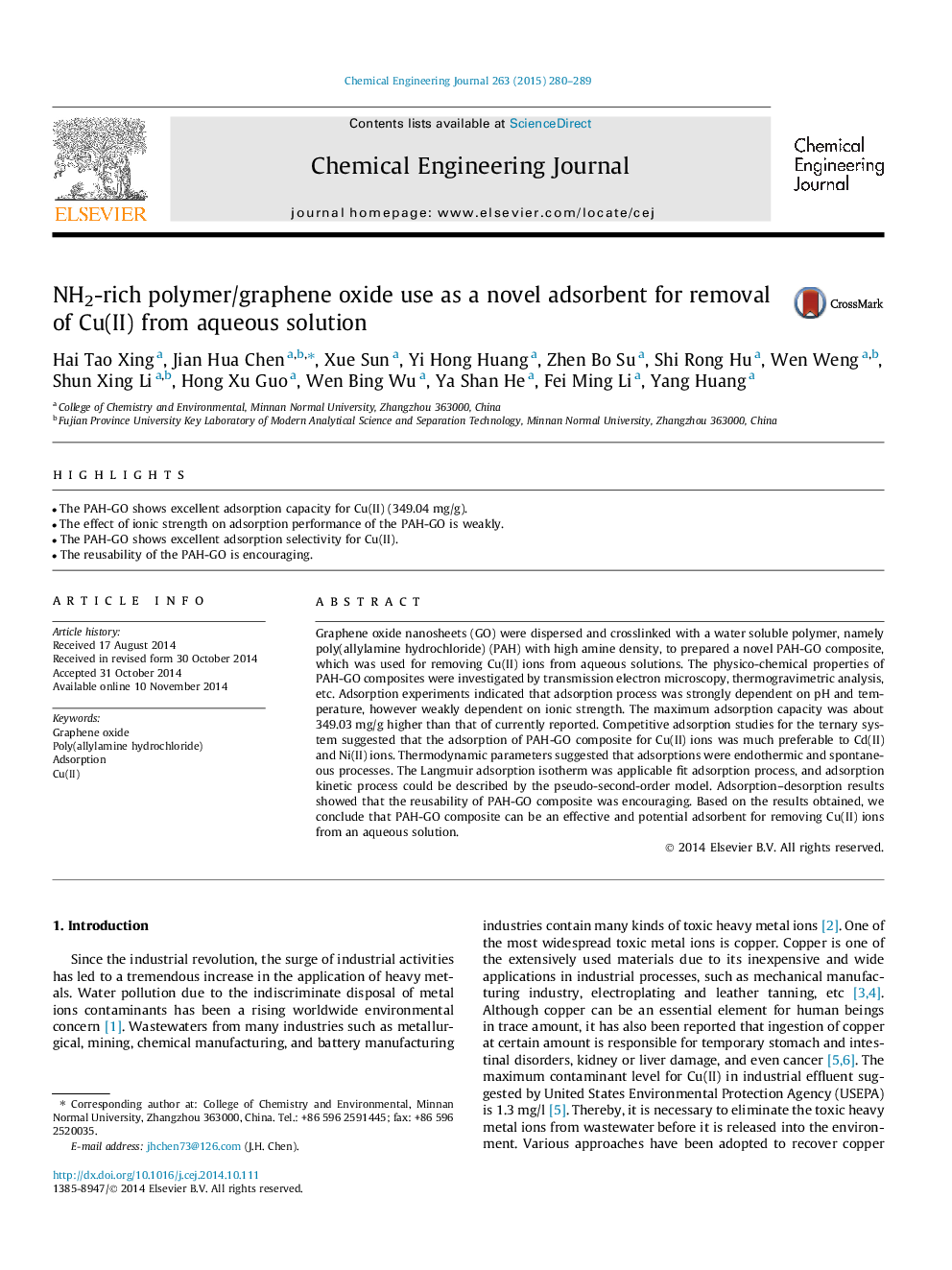| Article ID | Journal | Published Year | Pages | File Type |
|---|---|---|---|---|
| 146685 | Chemical Engineering Journal | 2015 | 10 Pages |
•The PAH-GO shows excellent adsorption capacity for Cu(II) (349.04 mg/g).•The effect of ionic strength on adsorption performance of the PAH-GO is weakly.•The PAH-GO shows excellent adsorption selectivity for Cu(II).•The reusability of the PAH-GO is encouraging.
Graphene oxide nanosheets (GO) were dispersed and crosslinked with a water soluble polymer, namely poly(allylamine hydrochloride) (PAH) with high amine density, to prepared a novel PAH-GO composite, which was used for removing Cu(II) ions from aqueous solutions. The physico-chemical properties of PAH-GO composites were investigated by transmission electron microscopy, thermogravimetric analysis, etc. Adsorption experiments indicated that adsorption process was strongly dependent on pH and temperature, however weakly dependent on ionic strength. The maximum adsorption capacity was about 349.03 mg/g higher than that of currently reported. Competitive adsorption studies for the ternary system suggested that the adsorption of PAH-GO composite for Cu(II) ions was much preferable to Cd(II) and Ni(II) ions. Thermodynamic parameters suggested that adsorptions were endothermic and spontaneous processes. The Langmuir adsorption isotherm was applicable fit adsorption process, and adsorption kinetic process could be described by the pseudo-second-order model. Adsorption–desorption results showed that the reusability of PAH-GO composite was encouraging. Based on the results obtained, we conclude that PAH-GO composite can be an effective and potential adsorbent for removing Cu(II) ions from an aqueous solution.
